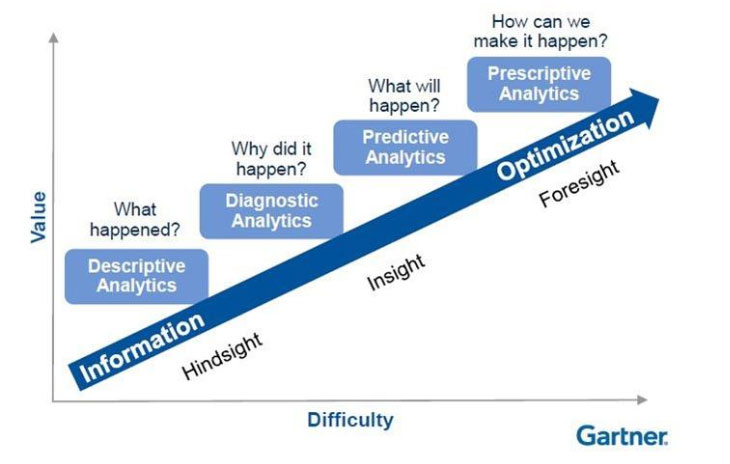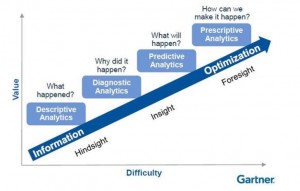We cannot predict the day we will die nor can we predict the stock market. There are many brilliant people who have tried since the dawn of time and I am yet to meet one who has the definitive answers. While history never repeats itself, it does seem to rhyme. There are patterns or seasons in the cycle that repeats itself over time. If we look at the stock market data over the last 100 years, we know that a market correction happens every year and takes on average 54 days to resolve itself. That is a pattern, but the exact timing is unpredictable for the 10% decline or its recovery.
… the process of discovering meaningful new correlations, patterns and trends by sifting through large amounts of data stored in repositories, using pattern recognition technologies as well as statistical and mathematical techniques.”Gartner Group
The accuracy of any predictive model is based on the accuracy of the data. Even when the data is very clean the models have a fair number of false positives and misdiagnosed cases. If this is true, then does it make sense to invest in these models?
The crazy answer is YES because patters are important. It can give insight into the direction and outcome, so we can act with confidence. For example, we know that winter is followed by spring and we also know that planting in winter yields poor growth compared to planting in spring. These patterns allow us to act with confidence. We cannot predict the seasons to the day on a calendar, but we know the general pattern.
Patterns can narrow down the segment to which actionable tasks are to be action-ed. This yields better quality results per action taken and put precious limited time and energy into the right places instead of spending energy and resources where the outcome will almost have an unfavorable, predicable outcome. If the outcome is not aligned to the objective set, then that segment should be ignored. The key to success is not doing more but knowing which tasks to do and which tasks need to be ignored. Do only things that work.
“What is important is knowing what is important” –Peter Drucker.
There’s no “100% right” answer, There’s just different levels of “right” …
The idea here is to help make better use of data that is already there and make more meaningful and proactive sense of new data coming in, so it can be acted up in a timely basis. It is important now to engage in this data discipline since the trend is that the data volumes are only growing, and we need to focus pass all the data noise. There is benefits to be derived if we do.
In a case of marketing here is how we can use patterns to become prescriptive while considering patterns in predicting. The patterns significantly increase ROI through segment reduction:
- Lower campaign costs by targeting those most likely to have impact
- Increase response rate by targeting segments specifically on attributes that matter to the objective
- Increase overall impact by not hassling loyal customers where the interaction will have little changes outcome
PS. the irony is sometimes you never know if you omitted a potential lead that was marked false by the model but the quality trade off can be worth it?
Stephen Choo Quan











[…] to navigate the data and find the patterns. Clearly the main benefit of this organized data is TARGETING. We can quickly target the perfect customer and make a compelling strategy that will be […]
Comments are closed.